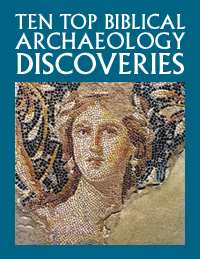During the late Second Temple period, during the time of the Herodian dynasty and Jesus of Nazareth, Jerusalem boasted one of the world’s largest and most elaborate aqueduct systems. While carrying out a salvage excavation in Jerusalem’s Givat Hamatos neighborhood, the Israel Antiquities Authority (IAA) uncovered over 1,000 feet of the city’s upper aqueduct, the longest segment yet discovered, revealing new clues about the ancient structure.

Water for Jerusalem
The upper aqueduct of Second Temple Jerusalem was one of two aqueducts that delivered water to the city. While the lower aqueduct delivered water to the Temple Mount, the upper aqueduct—as the name implies—brought water to the upper city, which was the area of Herod’s palace and the place where the city’s wealthiest residents lived.
“At the end of the Second Temple period, Jerusalem grew significantly: The Temple was rebuilt and the water that flowed from the Gihon Spring and the cisterns was no longer enough for the thousands of pilgrims and residents, and water had to be brought to the city from far away,” said Opher Shiyan and Rotem Cohen, co-directors of the excavation in an IAA statement. “Against this background, the Hasmoneans and King Herod built two elaborate aqueducts for Jerusalem, which were among the largest and most complex waterworks in the Land of Israel and the ancient world in general. The aqueducts concentrated spring water in the Bethlehem area and, with the help of huge pools and the force of gravity, made the water flow for tens of miles.”
The upper aqueduct continued to be used even after the destruction of Jerusalem in 70 CE and was the primary water source for the Roman city, Aelia Capitolina. The lower aqueduct, however, remained in use for far longer, even into the early 20th century.
During their excavation, the team identified three phases of the aqueduct’s use, with the earliest dating to the Second Temple period and the latest to the time of the city’s Roman occupation. The team also discovered 25 coins within the plaster that covered the aqueduct’s walls. The excavators suggest the coins were placed intentionally, perhaps as tokens for good luck, as they were found at nearly identical distances from each other.
It is still unclear whether the aqueduct system was first built by the Hasmoneans or by Herod the Great. Recent evidence suggests at least some sections were built later, possibly under the auspices of Pontius Pilate. The archaeological team hopes that the newly discovered coins can finally answer questions about the aqueduct’s origin and date.
All-Access members, read more in the BAS Library:
Jerusalem and the Holy Land(fill)
Jerusalem in David and Solomon’s Time
Not a BAS Library or All-Access Member yet? Join today.The post The Upper Aqueduct of Second Temple Jerusalem appeared first on Biblical Archaeology Society.





0 Commentaires